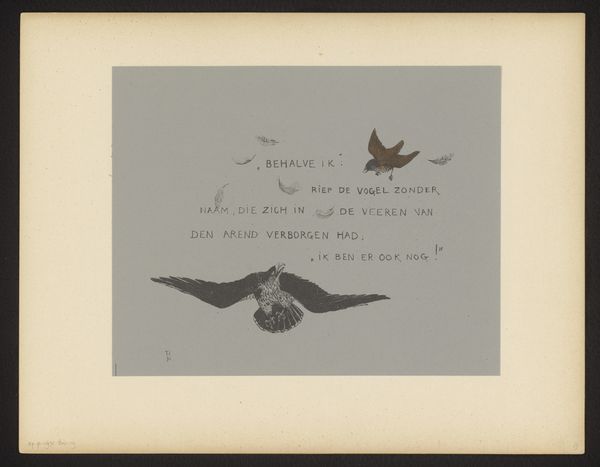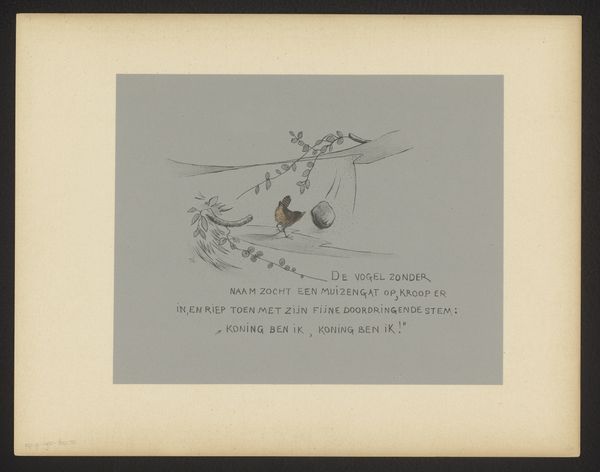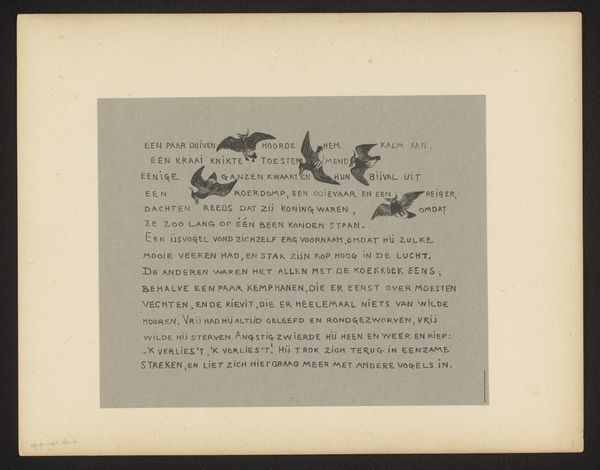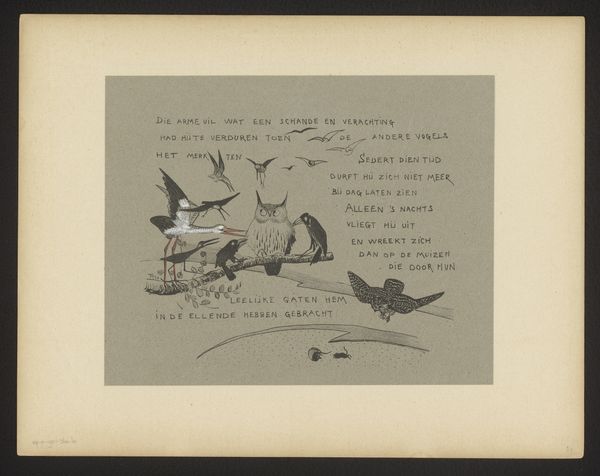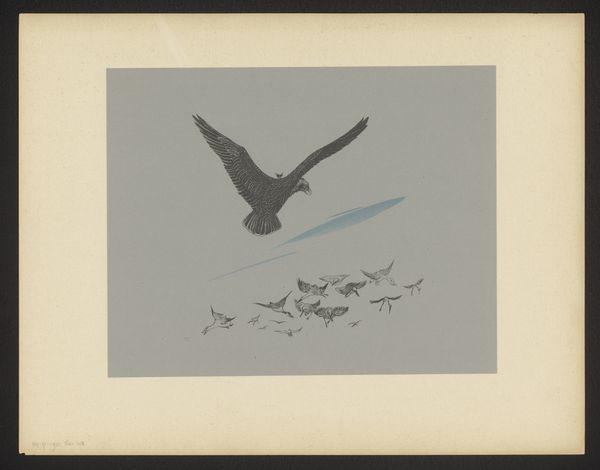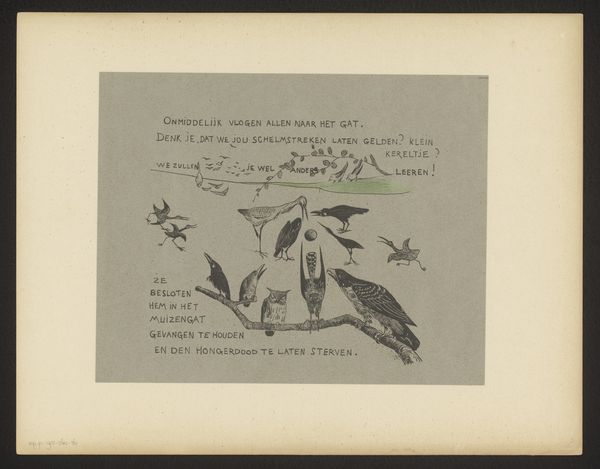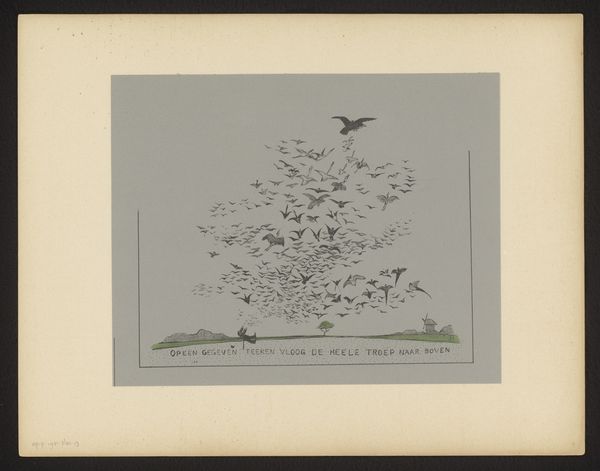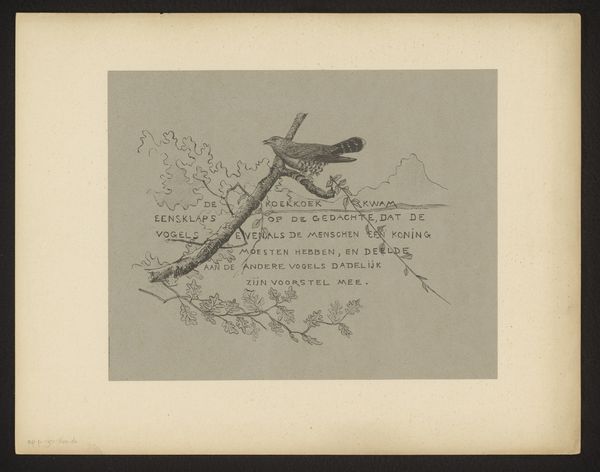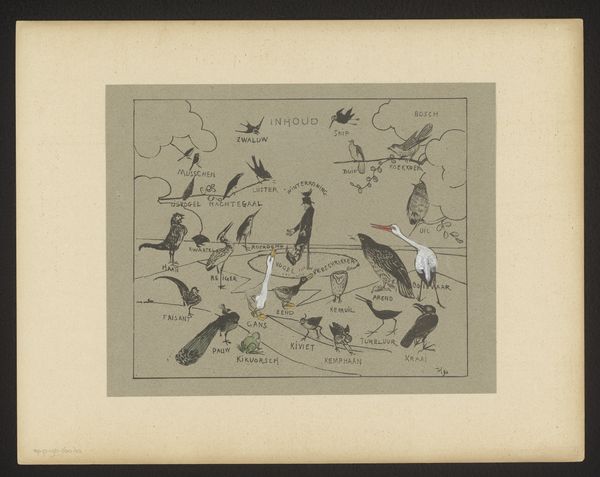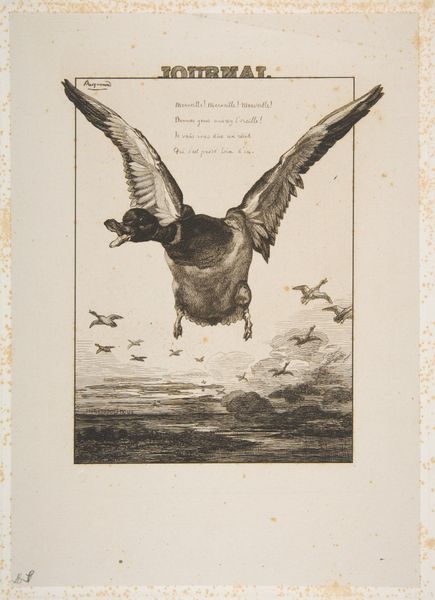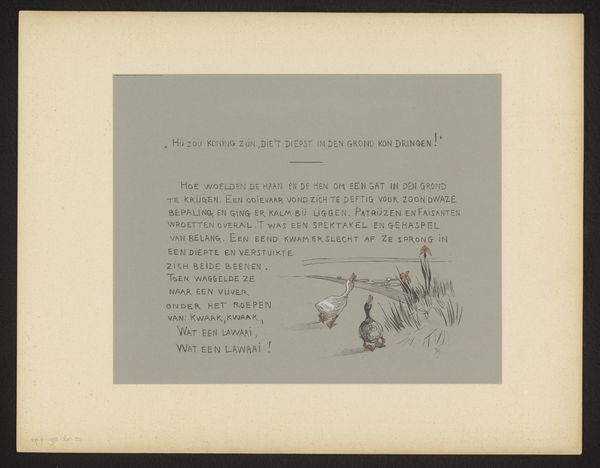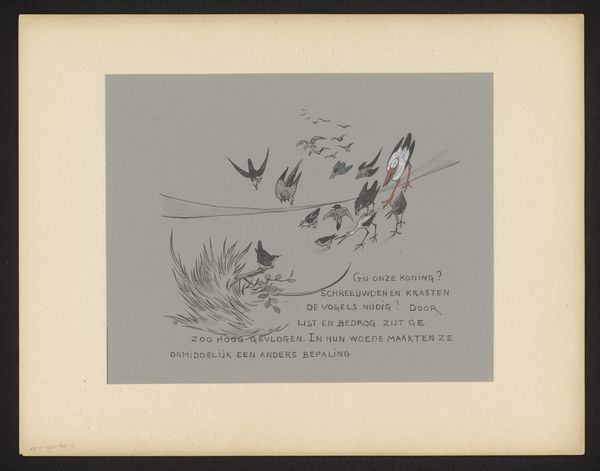
drawing, print, paper, ink
#
drawing
# print
#
landscape
#
figuration
#
paper
#
ink
#
line
#
symbolism
Dimensions: height 224 mm, width 281 mm, height 319 mm, width 408 mm
Copyright: Rijks Museum: Open Domain
Curator: Here we have "Eagle with a Wren on its Back," a work from 1892 by Theo van Hoytema, residing here at the Rijksmuseum. It's a drawing and print made with ink on paper. What springs to mind when you view it? Editor: It feels melancholic, strangely serene. That stark contrast between the powerful eagle and the tiny wren, all rendered in such delicate lines, suggests something about power and humility. Curator: Precisely. Note the symbolism. Hoytema’s command of line is masterful. The texture of the eagle's feathers, the minute details of the wren—these elements highlight both animals’ form while also establishing a visual hierarchy. Editor: It’s the tension that grabs me. The eagle appears caught mid-flight, wings extended, while the wren seems almost…perched comfortably? It raises questions of dominance and dependency. There is an inscription beneath, too. It's in Dutch, and appears to offer a reflective, almost cautionary perspective on status and ambition through the Eagle's eyes. Curator: Yes, exactly! The inscription underscores this interpretation. Van Hoytema uses figuration as a device for symbolic exploration; this is more than just an ornithological study, more than a landscape even. Editor: There is something incredibly peaceful in this portrayal. A sort of silent acceptance or, rather, resignation. That dark ink contrasts powerfully with the off-white paper—there’s a minimalist aesthetic at play that focuses one’s attention. Curator: It exemplifies a fin-de-siècle sensibility, tapping into currents of symbolism prevalent at the time. Hoytema challenges us to decode our place within a natural and, by extension, societal order. Editor: Looking closely, it feels as though the two birds merge in purpose. Despite their disparity, they seem intertwined in some unspoken agreement, perhaps symbolizing that true greatness lies not in dominance, but harmony. Curator: Well said! The print rewards prolonged study. Its formal elements are interwoven skillfully with deeper philosophical reflections. Editor: Ultimately, for me, it whispers a gentle lesson—the loftiest among us might carry the smallest burdens, and find surprising grace in doing so.
Comments
No comments
Be the first to comment and join the conversation on the ultimate creative platform.
